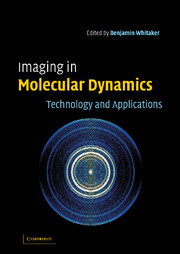Preface and acknowledgements
Published online by Cambridge University Press: 07 August 2009
Summary
The field of molecular reaction dynamics has made enormous progress since the pioneering experiments of Yuan Lee, Dudley Herschbach and John Polanyi. The intervening years have seen numerous developments in both experimental techniques and theoretical methods. For the authors of this book one of the most exciting of these advances was the introduction of charged particle imaging by Dave Chandler and Paul Houston described in their 1987 paper ‘Two-dimensional imaging of state selected photodissociation products detected by multiphoton ionization’ published in the Journal of Chemical Physics.
I was extremely fortunate to be able to join Paul Houston in Ithaca in 1988/89 where we constructed the second imaging machine (Dave Chandler's original machine in Sandia having been temporarily put out of action in an unfortunate accident that Paul describes in the first chapter). It was an extraordinarily exciting experience to be involved in those earlier experiments and I am extremely grateful to Paul for the opportunity. The early data showed the power of the technique to provide graphic insight into chemical mechanism but it was difficult to obtain quantitative information because of instrumental problems to do with the arrangement of the ion optics. These were overcome by André Eppink and Dave Parker working in Nijmegen.
- Type
- Chapter
- Information
- Imaging in Molecular DynamicsTechnology and Applications, pp. xi - xivPublisher: Cambridge University PressPrint publication year: 2003



